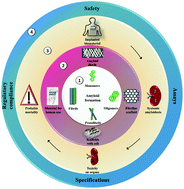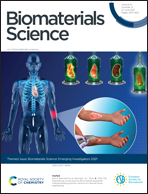Necessity of regulatory guidelines for the development of amyloid based biomaterials
Abstract
Amyloid diseases are caused due to protein homeostasis failure where incorrectly folded proteins/peptides form cross-β-sheet rich amyloid fibrillar structures. Besides proteins/peptides, small metabolite assemblies also exhibit amyloid-like features. These structures are linked to several human and animal diseases. In addition, non-toxic amyloids with diverse physiological roles are characterized as a new functional class. This finding, along with the unique properties of amyloid like stability and mechanical strength, led to a surge in the development of amyloid-based biomaterials. However, the usage of these materials by humans and animals may pose a health risk such as the development of amyloid diseases and toxicity. This is possible because amyloid-based biomaterials and their fragments may assist seeding and cross-seeding mechanisms of amyloid formation in the body. This review summarizes the potential uses of amyloids as biomaterials, the concerns regarding their usage, and a prescribed workflow to initiate a regulatory approach.



 Please wait while we load your content...
Please wait while we load your content...